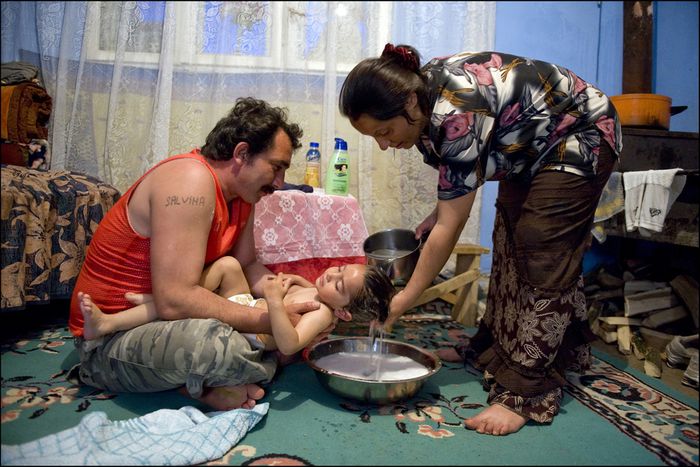
In the skin of Roma couples between Lyon and Romania (4 images)
Published on
They're discriminated against in Romania and are unwanted across Europe. The Roma truly live in an interior exile. French photographer Bruno Amsellem traced two couples and sheds light on lives and locations. His exhibition runs from 17 June until 24 December 2010 in Lyon, France

Crijma Covaci, Tarzan's wife, in front of her home, not far from the Hungarian border. She is preparing to depart for France. Since the fall of communism and the closure of state farms, an unemployed Roma population try their chances abroad. Sophie Landrin, a French journalist at Le Monde, worked alongside Amsellem for this report. She reminds us that the 'harsh living conditions in Romania force the Roma into exile'. Like other homes in this village, Crijma and Tarzans's is made out of terracotta and has neither running water nor electricity (Image: ©Bruno Amsellem/ represented by Signatures photography agency)

The village where Tarzan, Crijma Covaci and their daughter Izabela live, back in Romania. The family often go abroad; Roma can stay no more than three months in another member state if they don't find jobs. The Covacis retain a strong link with their home village, where they return for special occasions, such as religious holidays, such as Orthodox Easter, or for example for the birth of their second child (Image: ©Bruno Amsellem/ represented by Signatures photography agency)

In 2007, the French authorities closed down slum camps in suburbs across the country. In Lyon, the closure of a camp in the poor Lyon suburb of Vénissieux. Evicted families subsequently set up camp along the railtracks near the Part-Dieu main train station. They hide in fear of being rooted out again, making them more vulnerable in their isolation. Pictured with their two children, Traian and Pamela Covaci leave the Paul-Bert slum, which is close to Part-Dieu (Image: ©Bruno Amsellem/ represented by Signatures photography agency)

When Romania entered the European Union in 2007, the Roma (gypsy community) went from being asylum-seekers to citizens. One measure of the French government is to pay people to return to their country (147 euros or £122 per person). Gyongyi Fekete received aid from the French national agency for the reception of foreigners and migration (Agence Nationale de l'Accueil des Etrangers et des Migrations, ANAEM) after she was evicted from a slum in Vénissieux, Lyon. She takes a taxi from Bucharest airport to a slum in the village of Tinca (Image: ©Bruno Amsellem/ represented by Signatures photography agency)

Catch the exhibition at the centre for history of the resistance and deportation (Centre d'histoire de la résistance et de la déportation, CHRD) in Lyon



